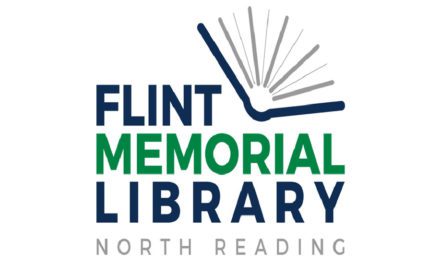By BOB TUROSZ
NORTH READING – Residents will notice an increase in their water bills in the coming fiscal year. Monday night, the Board of Selectmen voted unanimously to increase the town’s water rates by 8 percent in the next billing period that starts July 1.
After a short presentation on the finances of the water system, Town Administrator Michael Gilleberto and DPW Director Dick Carnevale recommended the 8 percent hike, base on the number of capital improvement needs facing the water system in the coming years. Gilleberto estimated an 8 percent increase would generate retained earnings of $127,162.
Selectmen Chairman Robert Mauceri said he was in full support of the 8 percent hike and that similar rate hikes will likely be necessary in the future. “We have to look at the big picture and build enough of a surplus to flatten out future (rate) hikes in the future.”
Mauceri conceded the higher rates will not be popular but they are necessary as the town lays the groundwork for future plans to transition to the MWRA for water supply. “This is a decision for the future of North Reading in terms of having a reliable source of water.”
To continue generating retained earnings of about $100,000 a year the town would need to raise water rates by 7.25 percent, Gilleberto told the Selectmen. On the other hand, if the goal is merely to cover costs without a surplus, rates would still have to rise 4.25 percent, he said.
Gilleberto explained the town currently produces 500,000 million gallons per day from its own wells and purchases twice that amount, one million gallons a day, from Andover. North Reading’ total consumption is about 547.5 million gallons per year, two-thirds of it from Andover. Lately, the town has been relying more on water use restrictions to live within these limitations.
North Reading current water rates are:
$7.48 per thousand gallons used up to 10,000 gallons per quarter. The new rate will be $8.08.
$10.97 per thousand gallons used up from 10,001 to 22,500 gallons per quarter. The new rate will be $11.84.
$14.96 per thousand gallons for anyone who uses more than 22,500 gallons in a quarter. The new rate will be $16.15.
The Water Department has an annual budget of about $3.8 million, of which only 19 percent is salaries. By far the largest expenses are water purchases from Andover, ($1.5 million) and debt service, $543,245.
The current rate structure has been in place for four years and has generated an average of $180,000 in retained earnings per year, which was used to repay funds to the stabilization fund that were borrowed from 2008-2011 to cover water operating deficits. This amount was fully repaid at the June Town Meeting but water department costs are projected to increase $273,881 in the next fiscal year and in the future.
That’s why the 4.25 percent increase is needed just to cover costs going forward and why a 7.25 percent hike is necessary for a surplus of about $100,000. The T.A. said the water system has needs that are projected to exceed $17 million over the next 10 years and that number doesn’t include major work on the town wells and treatment plants. These are largely improvements to the distribution system and don’t include any costs necessary to connect to the MWRA, Gilleberto said.
The Selectmen have publicly stated their interest in joining the MWRA water district by 2019. The MWRA has ongoing capital work to provide additional capacity and reliability north of Boston, like the covered reservoir in Stoneham and the MWRA has the capacity to meet North Reading’s needs.
The Selectmen have been taking a hard look at the MWRA because the town has long term water needs and Andover has previously told the town it cannot provide all of North Reading’s needs. Getting additional water from Andover would require modification to the state permit that allows Andover to sell to North Reading and even with North Reading’s wells operating at full capacity, the town will still be short of its demand now and in the future because of the stressed condition of the Ipswich River. It’s unlikely the state would allow the town to draw more water from the Ipswich River basin because of the stressed nature of the watershed.
Connecting to the MWRA will have separate costs that are projected to be $9.45 million in permitting, design and construction costs in Reading and North Reading. The construction costs would be bonded over 20 years with the possibility of a zero interest loan, Gilleberto reported. There would also be a $7.2 million “buy-in” to the MWRA that would be financed by the MWRA but repaid by the town, which may be eligible for a 50 percent repayment grant.
If the town is successful in transitioning to the MWRA by July 1, 2019, the Water Department would be able to save about $150,000 per year in salaries through the elimination of personnel, and expenses for things like chemicals, utilities and supplies would drop by about $200,000 a year. The cost of water purchases would rise about $516,000 a year because the town would be buying 1.5 million gallons a day from the MWRA instead of 1 MGD from Andover. The MWRA rate is 25 percent cheaper than what Andover currently charges.
Basically, the town faces limited options going forward because of the stressed condition of the Ipswich River basin, which will continue to limit North Reading’s ability to supply its own needs.
The advantages of purchasing all the town’s water in the future are that the supply itself will be certain and the town’s costs will be reduced for future capital investment, personnel salaries and costs for pumping and treatment and bulk treatment costs will be shared with other users in the MWRA.
The disadvantages are the town would be dependent on an outside source and will be a customer subject to MWRA rates.
Published in the June 25, 2015 edition




